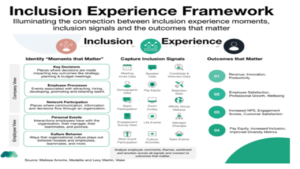There’s a rumor going around. It’s true!
One of our customers asked me recently whether I was going to retire. Another said she thought I already had! While I prefer to use the term “redirecting,” I will leave Visier in August 2023. I’m 78, and while age should never be a reason to leave the workforce, I want to be the complete mistress of my days. My husband retired a couple of years ago, and I like the freedom of his life. I also want to explore a few personal passions. I want to create a vacuum to see what’s next for me – thus, I’m redirecting. I’m so grateful for my seven years at Visier and all my years in the HR arena.
For me, leaving the workforce is bittersweet. The friends I’ve made in my 55-year career will continue, but the excitement of working with leading-edge customers and partners may fall away. The day-to-day collaborations with colleagues will disappear. I’ll miss that. I’ll miss the business travel I’ve done – all but one U.S. state, all continents except Antarctica, 50 countries? I’ll miss the foodie meals with colleagues and customers—the fun and memorable insights that spontaneously happen when we get together at conferences. I will miss all of that.

I will also miss my involvement with IHRIM. That started in 1994 with meetings in San Francisco at the grand Sheraton Palace, conferences in New Orleans and other fine spots (I think I rode a bull in Houston at one IHRIM event), seminars, webinars, and being involved with Workforce Solutions Review (WSR) as guest editor and two years as its managing editor. I learned a lot and have so many remaining friends from that community. Tom Faulkner and I keep in touch with many others – do you remember Karen Beaman? Karen and I collaborated on some joint research on global organizations1. As the person who started the Sierra-Cedar HR Systems Survey, now known as Sapient Insights Survey, 2 I could ask questions about global organization types and then watch the progress of multinational companies to international, then evolving to transnational organization types as they matured. We also watched their adoption of HR technologies grow as well. Vendors might review this older report as the adoption trajectory holds today. I have other collaborators on research today, both within Visier and externally. Ah, the memories. IHRIM WSR is letting me share some lessons I’ve learned in my 55-year career as a woman in tech. I’ll start with the positives and include one somewhat negative note.

Lesson 1: Technology introductions catalyze changes needed in the workplace. While I’ve not always been a researcher – I started as a programmer, systems analyst, and application manager, my first role as a researcher was at SRI International in the late seventies. This experience was when “office automation” was an emerging technology. We didn’t do our own typing, analysis, or graphics back then. For analysis, we used VisiCalc and Lotus 1 2 3. Secretaries typed memos and letters for their bosses and professional staff. I did market research back then, resulting in the product we know today as Microsoft Word. I even had a shouting match with Bill Gates, who wasn’t buying something I reported. I was so surprised that I yelled back.
Office automation gave typing, calculating, and graphics support to all employees, including executives and managers. It was the early days of integrating separate hardware: word processors, computers, and graphic/engineering systems. Imagine pulling data on amounts owed for a hospital stay from a mainframe computer into word processors to send a bill letter to a patient.
Office automation was a catalyst for many changes. Some jobs went away. The role of secretary went away. Some secretaries took advantage of opportunities and upgraded to new positions in administration. The farms of clerk typists working on early word processors were upgraded or eliminated. We all became better content creators, doing our own writing and presentations. One of the changes back then was, since office automation was eliminating jobs, organizations and the government engaged in upskilling the workforce. Major corporations did extensive re-education of impacted workers, especially the big insurance companies and banks.
Today, people analytics catalyzes change to support decisions with data. With people analytics, organizations can make granular data about the workforce available so that we treat our employees as the whole person they are when making decisions about them. People analytics is a catalyst to “see the human truth.” 3 Today, as managers are given tools to make people data-driven decisions, their biases can be eliminated or reduced. People analytics and nudge technologies can remind managers and their executives to recognize outstanding performance. Data can be used to identify burnout, and actions can be taken to minimize burnout. Data can be used in moments that matter 4 where the organization shows up as being inclusive or not, such that diversity and inclusion can be improved. So, as with office automation, people analytics catalyzes some needed changes.
What to do with my learning? Every time you introduce a new technology, think about the changes you’d like to see in the workplace and figure out the connection between it and making the change you want to have happen, happen.

Collaborative work between Lexy Martin, Visier and Melissa Arronte, Medallia highlighting the moments that matter where the organization shows up as inclusive or not, along with the signals that can be correlated with the outcomes that matter. It’s an example of the first lesson learned – technology can be a catalyst for change. The envisioned change is a more inclusive organization.

Lesson 2: Analysts create the future. Peter Drucker says, “If you want to create the future, create it.” What we write or research creates a future we want to see.
I did this countless times while managing the SierraCedar HR Systems Survey. I read about the growth of HR technology adoption and saw some patterns emerging that I amplified. For example, through analysis of the adoption of specific technologies and higher financial performance, I noticed that manager self-service talent management, business intelligence/workforce analytics, and social media – all emerging technologies back in 2000-2010 were being adopted by the more financially successful organizations. I focused research on showing the value of these technologies because what these technologies were enabling made a lot of sense. I also saw a trend towards a single HRMS solution being more cost-effective than multiple best-of-breed solutions and amplified that. I now see a similar trend towards a people analytics solution/platform that can integrate multiple data sources to provide a “single source of truth” and work to amplify that. Most recently, I’ve seen organizations that focus their people analytics work on improving diversity and inclusion outperform. I both want to see D&I improve and see it from the data, thus amplifying this in my research work. I see other analysts, such as Stacia Garr, RedThread Research, doing this when her firm lays out a vision for a more inclusive future of work or a more purpose-driven work environment. Kate Graham, Unleash, has a personal mission to democratize HR tech and encourage and amplify multiple new and different voices across the space. For example, from constantly listening to HR leader insights, she sees organizations needing a playbook to tackle skill gaps and shortages. She addresses this with a broad range of data and research from analysts, consultants, and vendors to help HR leaders evaluate their next steps to create a skills strategy to set them up for success.
What to do with this learning? First, pay special attention to those analysts that speak from their hearts to your heart. They are the ones worth continuing to listen to. Kate Graham says: “Our industry analysts are respected, and it is exciting to see their platforms being used to amplify purposeful and meaningful causes as they continually help HR navigate some choppy waters and uncertain times.”

Lesson 3: Organizations with leading practices outperform. Again, while managing the Sierra-Cedar HR Systems Survey, when I did my correlations of HR technology adoption and financial performance, I kept seeing the same organizations show up year after year. I created a mock stock portfolio and watched the same organizations perform well. The economic decline starting in 2008 put a monkey wrench in all these organizations’ stock performance, BUT these same organizations remained profitable through that economic downturn.
I’ve not been so rigorous about this analysis in recent years, but I still see some of these same organizations outperforming. So, what are the leading practices I’ve tracked?
- Adoption of people analytics. Organizations with people analytics outperform.
- Using people analytics to improve diversity and inclusion. Those focusing their analysis on improving DEIB outperform.5
- Getting alignment between HR and finance to understand each function’s need for organizing data (HR organizes by supervisory hierarchy; Finance organizes by cost center).
- Integrating more data sources, including business outcome data, into a data repository for data analysis. Don’t just integrate your HRMS and talent management but include data from workforce management solutions. The critical business outcome data – finances, customer satisfaction, NPS, and operational data are invaluable. After all, many organizations want to see how the workforce contributes to these business outcomes. Without that integration, it’s impossible to see.
- Enabling front-line managers, who manage people daily, with data to inform their decision-making on hiring, developing, rewarding, engaging, and motivating their people.
- Expanding the people analytics team to include data scientists, I/O psychologists, behavioral psychologists, storytellers, trainers, and change management specialists.
- A culture of change management.
What to do with this learning? First, consider my leading practices or start your own list, and second, pay attention to how organizations that practice these practices are doing in the stock market. You may even make a few dollars investing in them.

Lesson 4: Change management is a critical success factor for any technology implementation. I’ve been writing about this since 1983, when I saw that organizations successfully implementing office automation practiced change management. I have continued to see it as a leading practice when enabling people analytics. 6 I have paid much attention to what the more advanced adopters of people analytics are doing. (I’ve got some new research coming out later this year, including the change management practices associated with enabling front-line managers with people analytics.). Here’s a report 7 devoted to this topic I did a few years ago. Stacey Harris reported that organizations practicing a culture 8 of enterprise change management and applying practices to major technology implementation programs are ten times as likely to be viewed by all levels of management as contributing strategic value versus those that never use change management.
We still need to do it better and with agility. I’ve learned that change never happens as fast as predicted. Plans don’t come about. The budget isn’t available. ChatGPT may be the exception. But even there, change management is critical to ensure its use is for good in the broadest possible sense.
What to do? Question how your organization is doing with change management and ensure that any technology adoption includes change management. At a minimum, involve stakeholders from every community potentially impacted by your technology to be involved in critical choices about your implementation.

Lesson 5: We can improve by improving diversity, inclusion, and equity. As a woman in tech since 1967, I’ve seen terribly slow progress. When I started working as a programmer at the Bank of America in 1967, I was one of five women out of a staff of 100. B of A was unusual in hiring that many women as programmers and systems analysts! I was often the only woman for my first 20 years of working. I was the first woman management systems consultant at SRI International in 1979. I was the youngest, in my thirties, compared to a bunch of older men who had been heads of IT and CIOs at various organizations. Fast forward to 2023, where female representation in tech workforces is 33%, up slightly more than 2% from 2019, according to Deloitte Global. 9 This is considered good progress. But is it? Let’s also look at pay equity.
Overall, women were 56.2% of the labor force as of 2020, according to BLS. 10 In 2022, women earn an average of 82% of what men earn, according to Pew Research.11 Our data 12 based on the 17 million plus employee records of our customers, which I believe work for leading practice organizations, show earnings of $0.84 to the dollar earned by their male counterparts, but that’s a decline from progress since we began tracking in 2017! Pay for women in management also fell from $0.90 to $0.89. These are concerning reversals. Organizations must prioritize pay parity this year to reach the 2030 equity goal; otherwise, this goal won’t be realized until 2036.
What to do? Organizations need to make pay parity a priority in 2023 and moving forward. At a minimum, if you’re a leader, it’s in your company’s best interest to address the legal responsibilities to which you adhere to gender discrimination.

Lesson 6: Toxicity in the workplace is hurting organizations’ bottom line. Toxicity 13 and pay equity were front and center in two recently released research reports. As mentioned above, the study on pay equity shows signs of a widening gap between male and female pay. And, then according to MIT Sloan Management Review,14, women are 41% more likely than men to experience a toxic corporate culture. The pandemic appears to have widened the toxic culture gender gap. Toxic culture is not only an outlier regarding the sentiment gap between women and men but also exacts an enormous toll on organizations and individuals.
If allowed to continue, the toxicity and dissatisfaction will hurt a company’s bottom line. Workplace performance drops and the organization’s integrity is compromised. Minimizing, gaslighting, or turning your head the other way, in effect, creates a toxic work culture for all employees. The company becomes a revolving door for workers. It becomes more challenging to attract and retain talented employees who can always find a mentally healthier and more supportive work environment that accommodates gender equality for all workers.
What to do? Leaders who successfully narrow the toxic culture gap begin by focusing on employee experience and identifying and rooting out harmful behaviors across all levels of the organization through a sustained cultural detox effort. Our workforce deserves this.
I feel like I should have more lessons, but these are the ones that have stuck with me the longest or are top of mind today as I leave traditional employment. Please feel free to keep in touch at [email protected]. I will decompress for a while, but I will watch our community as it’s so exciting.
Endnotes
1 Karen Beaman and Lexy Martin, “Leveraging HR Technology: From Global Savings to Transnational Value,” IHRIM Journal, Volume XIII, Number 3, 2009, https://bit.ly/3AvkCrr
2 25th Annual Sapient Insights HR Systems Survey Key Findings, https://bit.ly/43Z78lj
3 Catherine Cheek, “Human Resource? How about the Human Truth,” Visier blog, https://bit.ly/40BwYZI
4 Lexy Martin, “The Value of People Analytics in Improving DEI,” People Matters blog, https://bit.ly/3KZ4tzD
5 Catherine Check, “Four Critical Insights from the 2021 People Analytics Maturity Survey, “Visier blog, https://bit.ly/3n2uAOc
6 “Why the Majority of People Analytics Initiatives Fail without Change Management, Culture Amp blog, https://bit.ly/3mSHdvb
7 “Leading Practices in People Analytics Change Management,” Visier research white paper, https://bit.ly/3HclqoZ
8 Stacey Harris, “Why It’s Important to Support a Culture of Change Management,” LinkedIn, https://bit.ly/3LnCNWw
9 “Women in the Tech Industry: Gaining Ground, but Facing New Headwinds,” Deloitte article, https://bit.ly/3N4FmOs
10 “Women in the Labor Force: A Databook,” US Bureau of Labor Statistics, March 2022, https://bit.ly/41Vep3M
11 “Gender Pay Gap in US Hasn’t Changed Much in Two Decades,” Pew Research Center, March 2023, https://bit.ly/3UZcZ6j
12 “Visier Insights Report: State of Pay Equity 2023,” Visier research report, https://bit.ly/440NsgS
13 Megan Leonhardt, “America has a Toxic Workplace Problem, and your Boss May Be to Blame,” Fortune, January 2023, https://bit.ly/41ybvCx
14 Donald Sull and Charles Sull, “The Toxic Culture Gap Shows Companies are Filing Women,” MIT Sloan Management Review, March 2023, https://bit.ly/3L6YGrE



